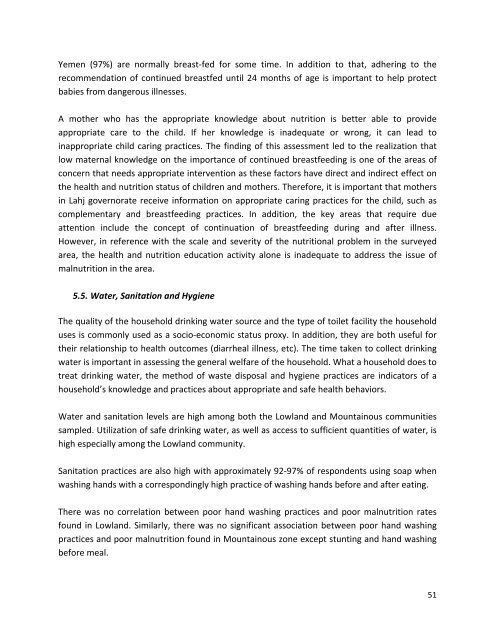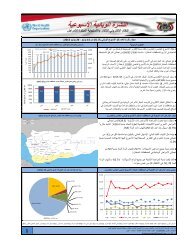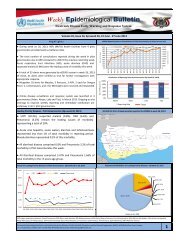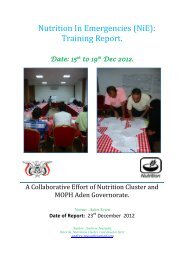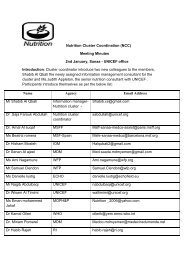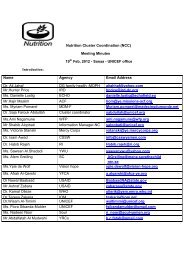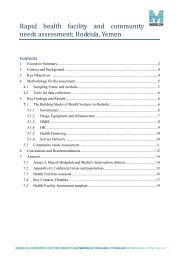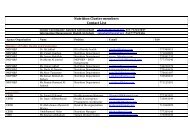Download - Yemen Humanitarian Response | YEMEN
Download - Yemen Humanitarian Response | YEMEN
Download - Yemen Humanitarian Response | YEMEN
Create successful ePaper yourself
Turn your PDF publications into a flip-book with our unique Google optimized e-Paper software.
<strong>Yemen</strong> (97%) are normally breast-fed for some time. In addition to that, adhering to therecommendation of continued breastfed until 24 months of age is important to help protectbabies from dangerous illnesses.A mother who has the appropriate knowledge about nutrition is better able to provideappropriate care to the child. If her knowledge is inadequate or wrong, it can lead toinappropriate child caring practices. The finding of this assessment led to the realization thatlow maternal knowledge on the importance of continued breastfeeding is one of the areas ofconcern that needs appropriate intervention as these factors have direct and indirect effect onthe health and nutrition status of children and mothers. Therefore, it is important that mothersin Lahj governorate receive information on appropriate caring practices for the child, such ascomplementary and breastfeeding practices. In addition, the key areas that require dueattention include the concept of continuation of breastfeeding during and after illness.However, in reference with the scale and severity of the nutritional problem in the surveyedarea, the health and nutrition education activity alone is inadequate to address the issue ofmalnutrition in the area.5.5. Water, Sanitation and HygieneThe quality of the household drinking water source and the type of toilet facility the householduses is commonly used as a socio-economic status proxy. In addition, they are both useful fortheir relationship to health outcomes (diarrheal illness, etc). The time taken to collect drinkingwater is important in assessing the general welfare of the household. What a household does totreat drinking water, the method of waste disposal and hygiene practices are indicators of ahousehold’s knowledge and practices about appropriate and safe health behaviors.Water and sanitation levels are high among both the Lowland and Mountainous communitiessampled. Utilization of safe drinking water, as well as access to sufficient quantities of water, ishigh especially among the Lowland community.Sanitation practices are also high with approximately 92-97% of respondents using soap whenwashing hands with a correspondingly high practice of washing hands before and after eating.There was no correlation between poor hand washing practices and poor malnutrition ratesfound in Lowland. Similarly, there was no significant association between poor hand washingpractices and poor malnutrition found in Mountainous zone except stunting and hand washingbefore meal.51


